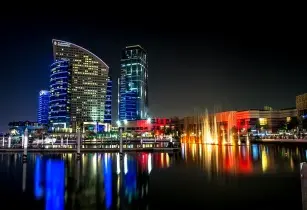Amir Naqvi, business leader for fluorine Products, Middle East, Honeywell, has discussed the need of sustainable solutions in achieving energy efficiency goals in the Middle East region
The Middle East is fast becoming a global sustainability leader. A more environmentally conscious public is increasingly seeking sustainability in the home, office and throughout daily life. The construction industry is responding quickly to the transformation, so much so that it?s hard to imagine a major Gulf Corporation Council (GCC) construction project not embracing its green credentials.
The shift was inevitable. Decades of prosperity and population growth have led to unsustainable levels of consumption. According to Strategy&, electricity use in the UAE alone has more than doubled over the past ten years, with almost 47 per cent of the energy consumption tapped for residential use ? in sharp contrast to the average 25 per cent elsewhere in the world.
The Middle East has taken several bold new steps toward improving sustainability. Saudi Vision 2030 and the UAE?s Energy Plan 2050 have together set tough new domestic energy efficiency goals.
To adhere to these new energy standards and comply with international requirements such as the Montreal Protocol?s Kigali amendment ? which is focused on phasing down high-global-warming hydrofluorocarbons (HFCs) globally? industries are now looking at long-term alternative refrigerants for air conditioning and refrigeration that will enable improvement in energy efficiency in high ambient temperature conditions and lower their global-warming-potential (GWP) impact. Meanwhile, developers in growth markets like Saudi Arabia are looking for foam insulation made with blowing agents with better insulation properties and lower carbon footprint.
Honeywell provides solutions such as refrigerants and foam blowing agents for these needs. In fact, Honeywell and its suppliers have completed a US$900mn investment programme in research, development and new capacity based on Honeywell?s hydrofluoro-olefin (HFO) technology.
Honeywell estimates that if all HFCs and other high-GWP substances were to transition to HFOs, like those offered via the Solstice platform, it can reduce emissions by 475 mmt of carbon dioxide equivalent to CO2e by 2025. This is like removing 100mn cars from the road for one year.
?Like our customers, we?re using Solstice products to meet our own commitments ? like the roof insulation of our new, state-of-the-art office complex in Masdar City, near Abu Dhabi,? Naqvi added.





